PIPERIDOLATE
- CAS NO.:82-98-4
- Empirical Formula: C21H25NO2
- Molecular Weight: 323.43
- EINECS: 201-449-7
- SAFETY DATA SHEET (SDS)
- Update Date: 2024-11-19 20:33:22
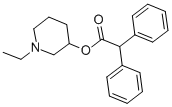
What is PIPERIDOLATE?
Originator
Dactil, Merrell National ,US ,1954
Definition
ChEBI: 2,2-diphenylacetic acid (1-ethyl-3-piperidinyl) ester is a diarylmethane.
Manufacturing Process
To obtain the free base, 34 g (0.256 mol) of N-ethyl-3-piperidinol and 20 g (0.22 mol) of diphenylacetyl chloride were mixed in 80 cc of isopropanol and the solution was refluxed for 2 hours. The isopropanol was evaporated in vacuo at 30 mm pressure, the residue was dissolved in 150 cc of water and the aqueous solution was extracted several times with ether. The aqueous solution was then neutralized with potassium carbonate and extracted withether. The ethereal solution was dried over anhydrous potassium carbonate and the ether removed by distillation. The product was then distilled at its boiling point 180° to 181°C at 0.13 mm of mercury whereby 14 g of a clear yellow, viscous liquid was obtained. The nitrogen content for C21H25NO2 was calculated as 4.33% and the nitrogen content found was 4.21%.
The starting material was produced by the reaction of furfural with ethylamine followed by hydrogenation to give N-ethyl-N-(2-tetrahydrofurfuryl)amine. Treatment of that material with hydrogen bromide in acetic acid gives N-ethyl3-piperidinol.
brand name
Dactil (Marion Merrell Dow).
Therapeutic Function
Spasmolytic
Properties of PIPERIDOLATE
| Melting point: | <25 °C |
| Boiling point: | bp0.18 191-192° |
| Density | 1.11±0.1 g/cm3(Predicted) |
| storage temp. | Store at -20°C |
| solubility | DMSO : ≥ 150 mg/mL (463.78 mM) |
| pka | 7.97±0.10(Predicted) |
| form | Liquid |
| color | Colorless to light yellow |
Safety information for PIPERIDOLATE
Computed Descriptors for PIPERIDOLATE
New Products
Tert-butyl bis(2-chloroethyl)carbamate (S)-3-Aminobutanenitrile hydrochloride N-Boc-D-alaninol N-BOC-D/L-ALANINOL N-octanoyl benzotriazole 4-Hydrazinobenzoic acid 3,4-Dibenzyloxybenzaldehyde Electrolytic Iron Powder 1,1’-CARBONYLDIIMIDAZOLE R-2-BENZYLOXY PROPIONIC ACID 4-HYDROXY BENZYL ALCOHOL 1,1’-CARBONYLDI (1,2-4 TRIAZOLE) S-2-CHLORO PROPIONIC ACID (2-Hydroxyphenyl)acetonitrile 4-Bromopyrazole 5-BROMO-2CYANO PYRIDINE 5,6-Dimethoxyindanone 5-broMo-2-chloro-N-cyclopentylpyriMidin-4-aMine 3-(Hydroxymethyl)benzoate N-Boc-2-chloroethylamine 1-Bromo-2-methoxy-3-nitrobenzene N-Methyl-3-cyclopenten-1-amine 2-Bromo-3-hydroxybenzaldehyde 1H-indazole-5-carboxamideRelated products of tetrahydrofuran

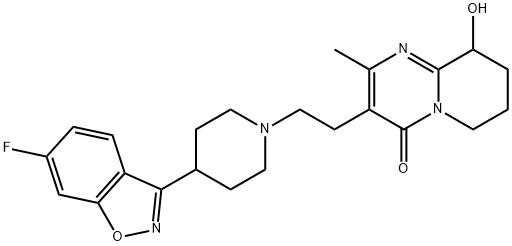
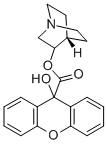
![N-METHYL L-QNB, [N-METHYL-3H]-](https://img.chemicalbook.in/StructureFile/ChemBookStructure2/GIF/CB1689129.gif)

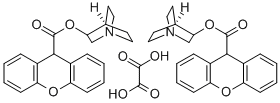

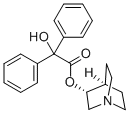
You may like
-
 7441-43-2 98%View Details
7441-43-2 98%View Details
7441-43-2 -
 1260741-78-3 6-Bromo-3-iodo-1-methyl-1H-indazole 98%View Details
1260741-78-3 6-Bromo-3-iodo-1-methyl-1H-indazole 98%View Details
1260741-78-3 -
 (3-Benzyloxypropyl)triphenyl phosphonium 98%View Details
(3-Benzyloxypropyl)triphenyl phosphonium 98%View Details
54314-85-1 -
 4-bromo-3,5-dimethylbenzenesulfonyl chloride 1581266-79-6 98%View Details
4-bromo-3,5-dimethylbenzenesulfonyl chloride 1581266-79-6 98%View Details
1581266-79-6 -
 2490430-37-8 98%View Details
2490430-37-8 98%View Details
2490430-37-8 -
 N-(5-Amino-2-methylphenyl)acetamide 5434-30-0 98%View Details
N-(5-Amino-2-methylphenyl)acetamide 5434-30-0 98%View Details
5434-30-0 -
 124371-59-1 98%View Details
124371-59-1 98%View Details
124371-59-1 -
 53857-52-2 98%View Details
53857-52-2 98%View Details
53857-52-2